Things were simple back in the day. And better for it some might say. In the booming post-war economy of the USA, the big three car manufacturers had things largely to themselves.
They didn’t have to try too hard to woo the customers. At the end of the fifties, Chevrolet had a 25 per cent share of the market, and in 1959 its passenger car line-up was spun entirely off of one chassis.
Talk about economies of scale. That didn’t mean buyers were hard done by for choice, however, with Chevrolet offering 16 different models/body configurations.
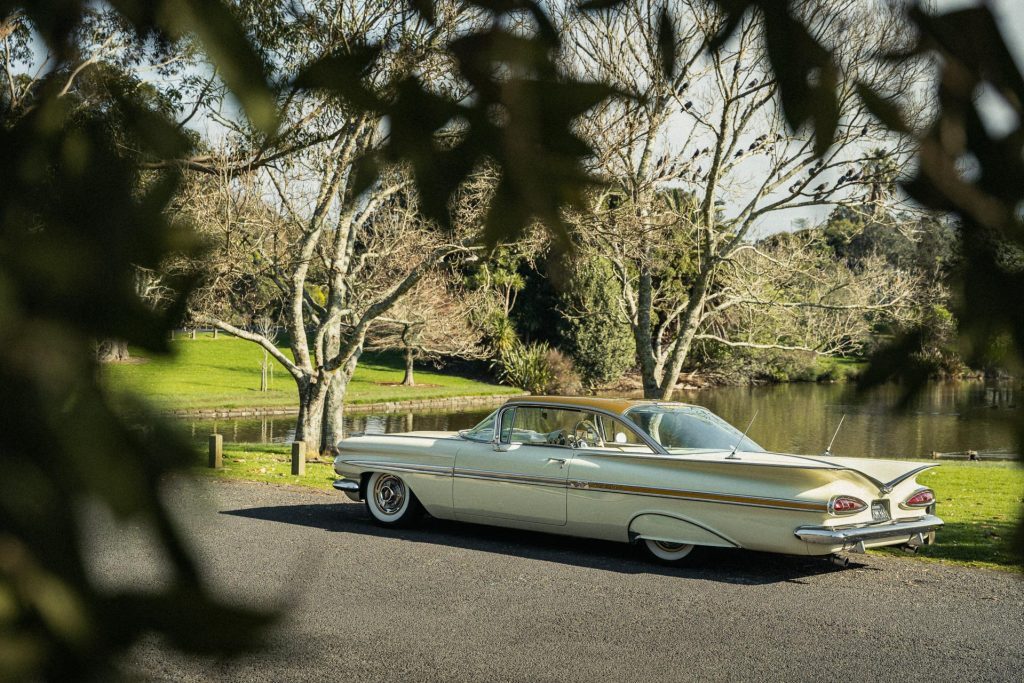
The line-up kicked off with the Biscayne, which replaced the DelRay nameplate as the entry-level model. Those with more cash could opt for the Belair, a badge previously used for top-of-the-line models.
And so for 1959, that meant the Impala line sat at the top of the Chevrolet range. The models were differentiated by the amount of chrome and body adornments they wore, the Impala dripping in shiny stuff.
While the Biscayne was offered in two- and four-door sedan styles, the Belair added a sports sedan offering (a pillarless sedan with a flat roof) while the Impala offered a sports coupe and the convertible.
There was also a range of station wagons including a two-door, one with seating for nine Americans while the top-spec Nomad was the most expensive model in the 1959 range.
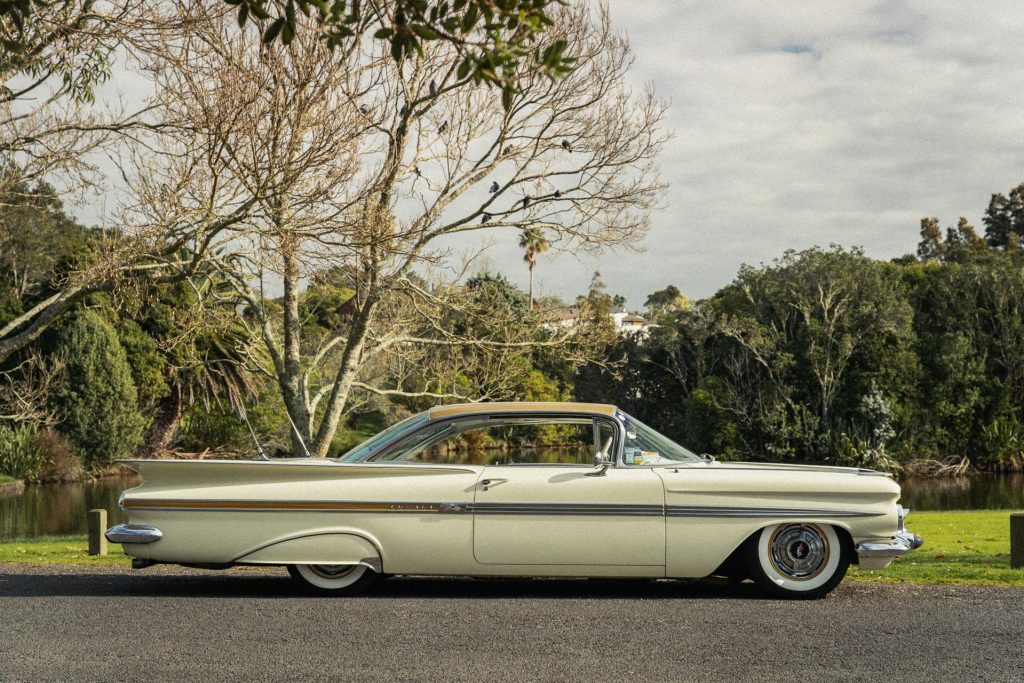
And don’t forget the commercials including the El Camino.
The 1959 line wore fresh styling that added width to the bodies. The rear end was dominated by the new take on the big fins, which spread out like wings across the back while the cat’s eye tail lights were a feature as well.
Given the simplicity of the age, the fact the seat cushions had more padding was a highlight.
So there were oodles of choices for American buyers and that’s before they started delving into the vast list of options available for these models, including the line up of engines.
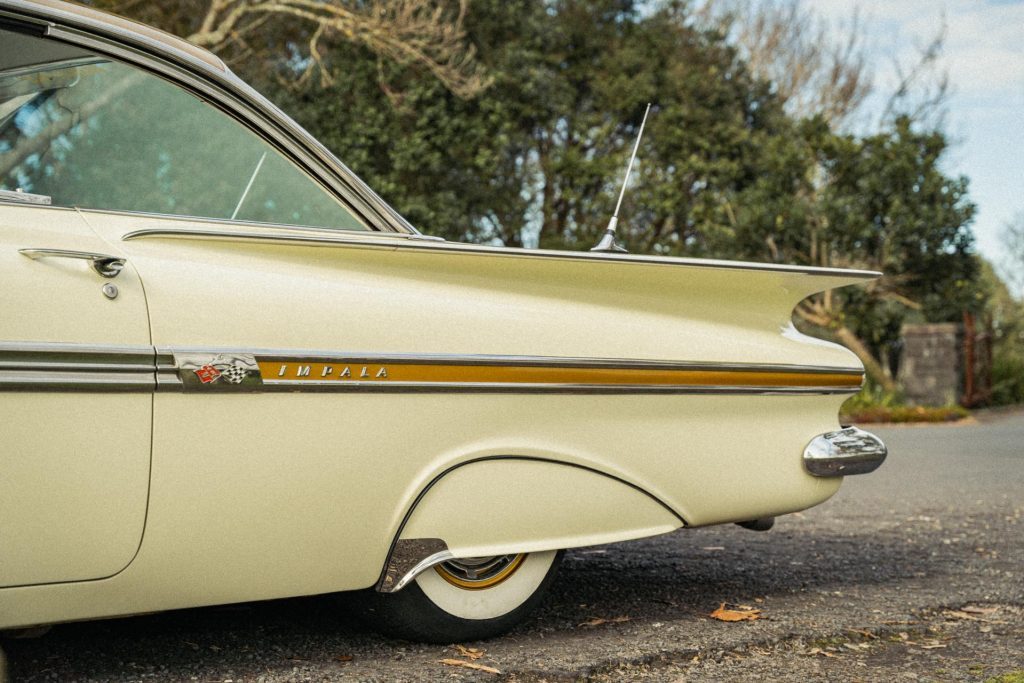
Buyers had the choice of sticking with the 235 cubic inch 135hp inline six (dubbed the Hi-Thrift 6) or they could spend up on a variety of V8 engines.
These started with the 283CID 185hp Turbo Fire V8 or the 230hp Super Turbo Fire with its higher compression ratio and four-barrel carb.
There were a couple of fuel-injected options too, though these were expensive, asking more than the larger 348 CID engines.
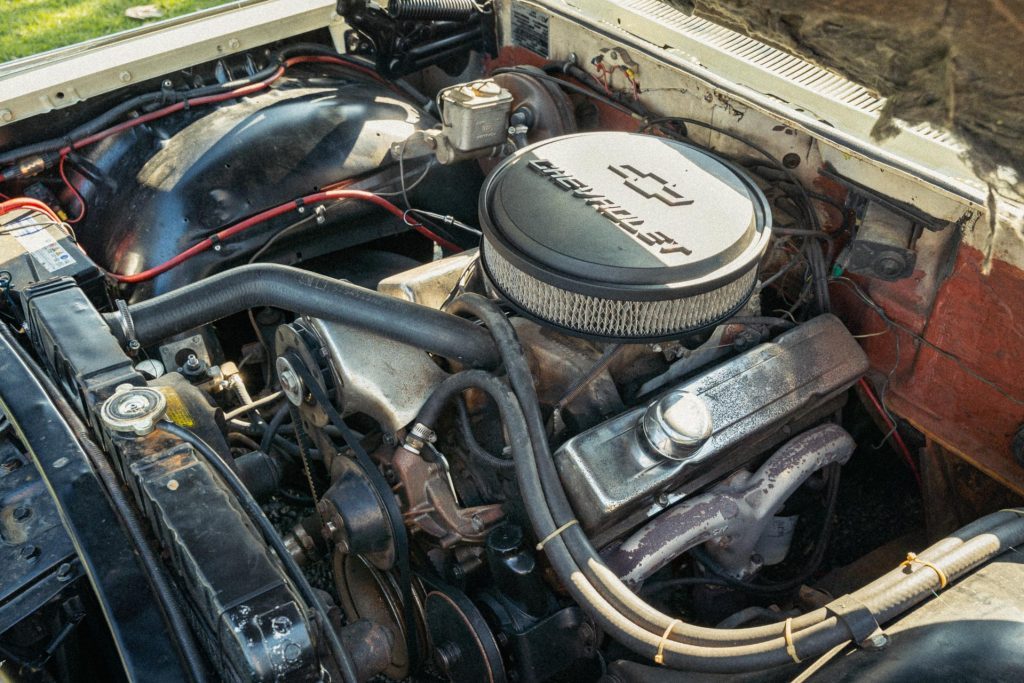
These 5.7-litre eights ranged from the 250hp Turbo Thrust to the 335hp Super Turbo Thrust Special, complete with a 11.25:1 compression ratio and a trio of double-barrel carbs.
A three-speed manual was standard transmission fare (on the tree, described as ‘shifting at its finest, with gears shot-peened for smoothness and long life’) with options to go for an overdrive unit or the Powerglide two-speed auto.
A unique offering was the Turboglide auto, a complicated, concurrently-geared transmission with a tricky torque converter, said to give a ‘smooth and undisrupted power flow’.
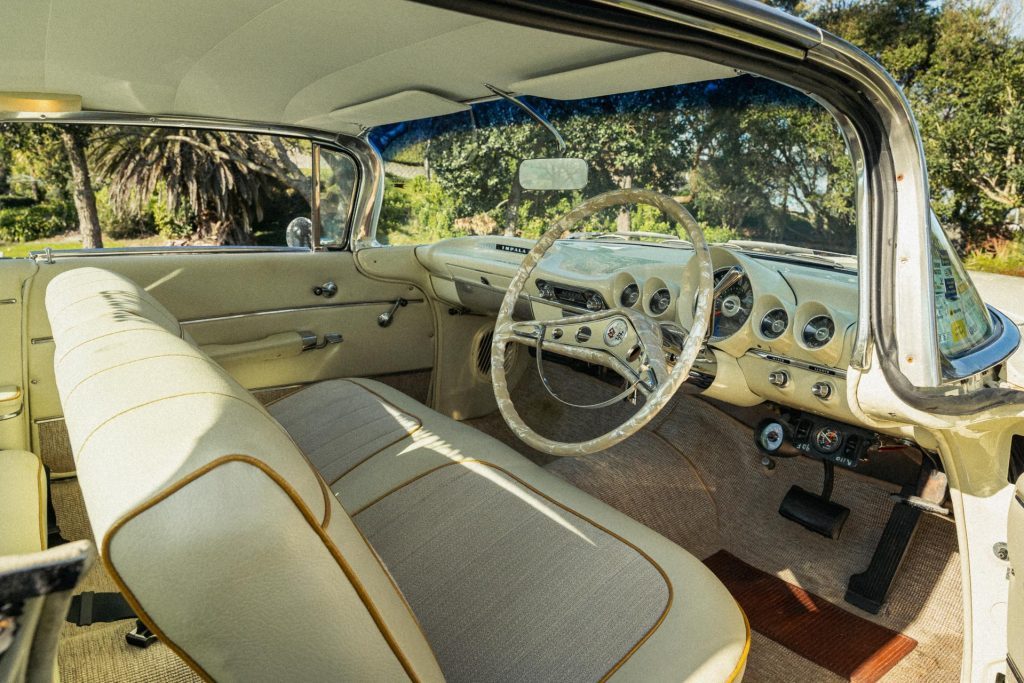
It was short-lived however, lasting from 1957-1961, due to reliability issues. There was also the option of a four-speed manual (floor-mounted shifter with full synchro on all gears) and a posi-traction rear axle on the higher powered V8 models.
Other options included air suspension ($135; ‘not until you’ve experienced its super-softness will you fully know how floating-smooth travel can really be’), power brakes, power steering, power windows, even powered seats for some models.
GM made just under 1.5 million Chevrolet-badged cars in 1959, and of those 165,000 were the Impala Sports Coupe.
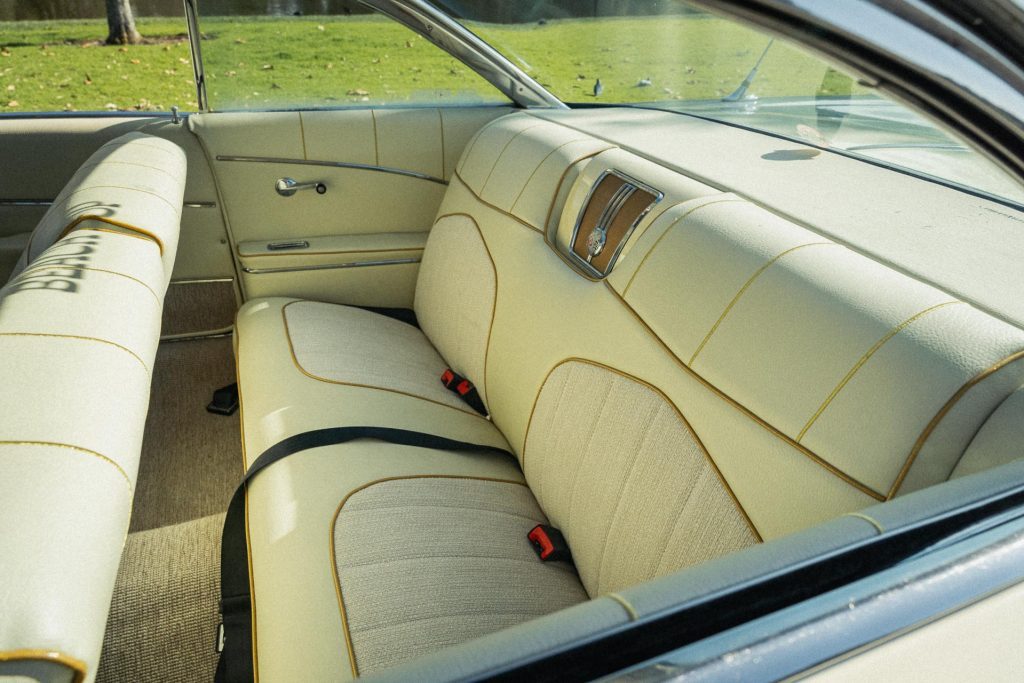
And one of those survivors eventually made its way here to New Zealand. Aucklander, Don Deane, has enjoyed ownership of this 1959 Impala Sport Coupe for the past nine years after importing it from Australia.
Those with an eye for detail will have spotted its steering wheel residing on the right side of the cabin. While it’s originally a Californian car, it was converted across the Tasman during its decades there.
This makes it much easier to enjoy, says Don. “It’s my daily driver, not just a weekend thing; I use it everyday.”
It took ‘about a year and a half’ to sort the cert for the RHD conversion as they ‘had welded bits and pieces together underneath’. It’s hard to pick the conversion from the interior though.
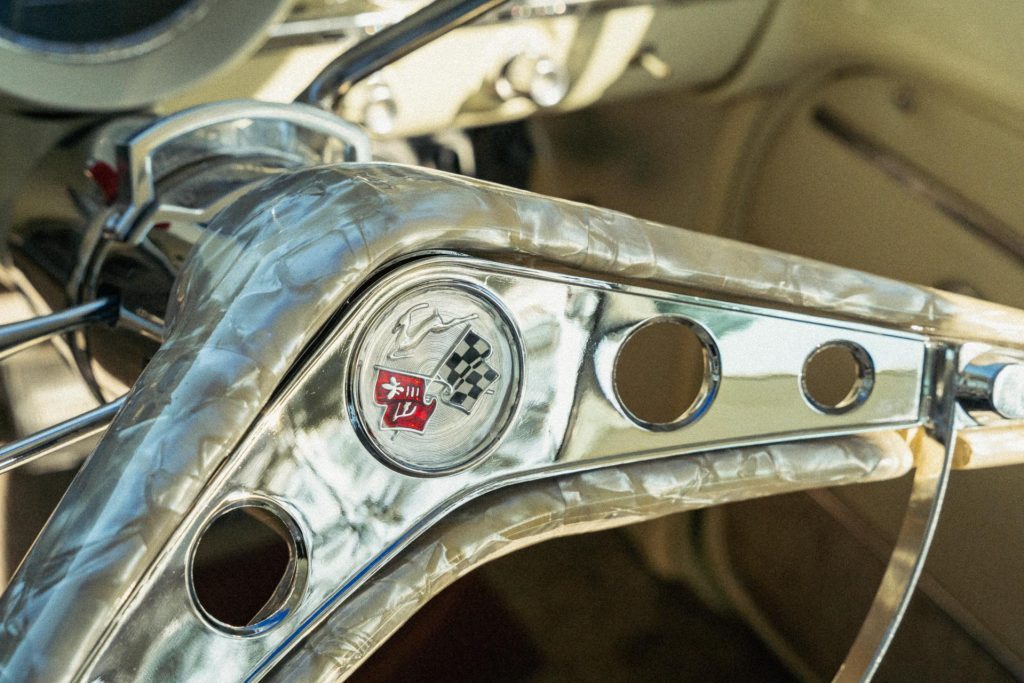
Some models in the ’59 range were made in Canada for RHD export markets and so Don suspects his car uses one of the factory-produced RHD dashboards.
Don had always had his eye on the 1959 Impala. “It’s a beautiful car, I reckon. I saw one years ago, it was the middle spread of this book, and I fell in love with it.”
It took a solid year of searching for the right car as the bubble tops don’t pop up for sale often. “I trolled all the sites trying to find one but they get snapped up quickly.
I’m glad I held out for one though. I found a four-door, and considered that, but thought no, hold off to find the one.”
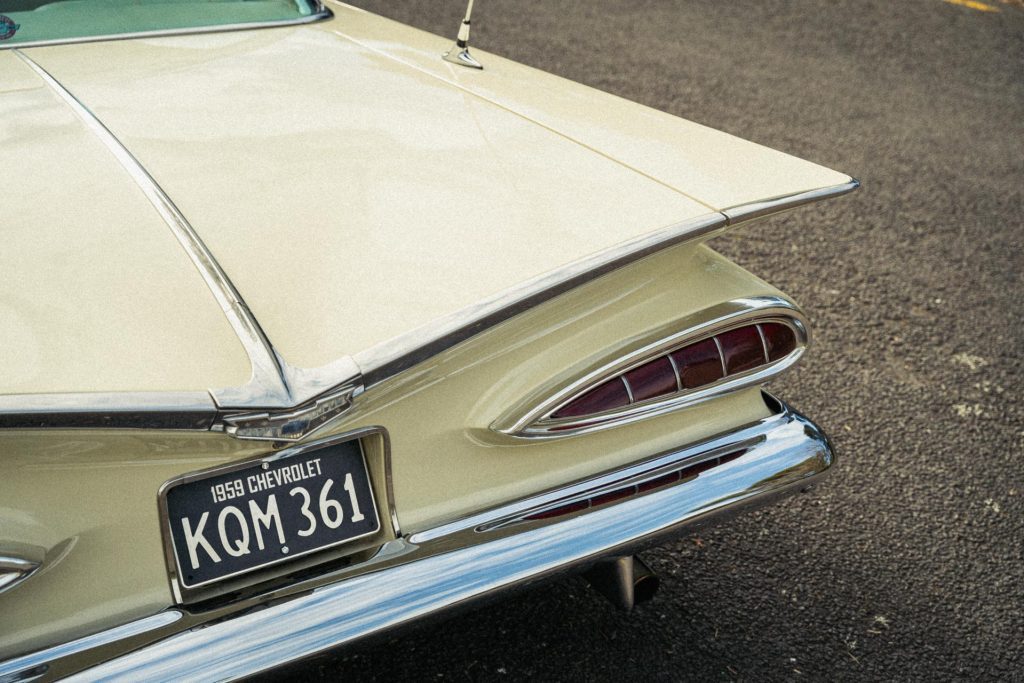
This Impala has been re-powered at some stage by a 350 Chev running a Holden transmission and a nine-inch diff, (‘about the only good thing Ford did’).
It’s also air-bagged, which Don says is good to set the stance when you’re parked up. It also adds practicality for daily driving, the ride height variable to help negotiate ‘all the speed bumps they put in everywhere’.
The Impala wasn’t in quite such glamorous shape when it first arrived, Don putting a good deal of time and effort into getting it to this stage, and a hell of a lot of money too he chuckles.
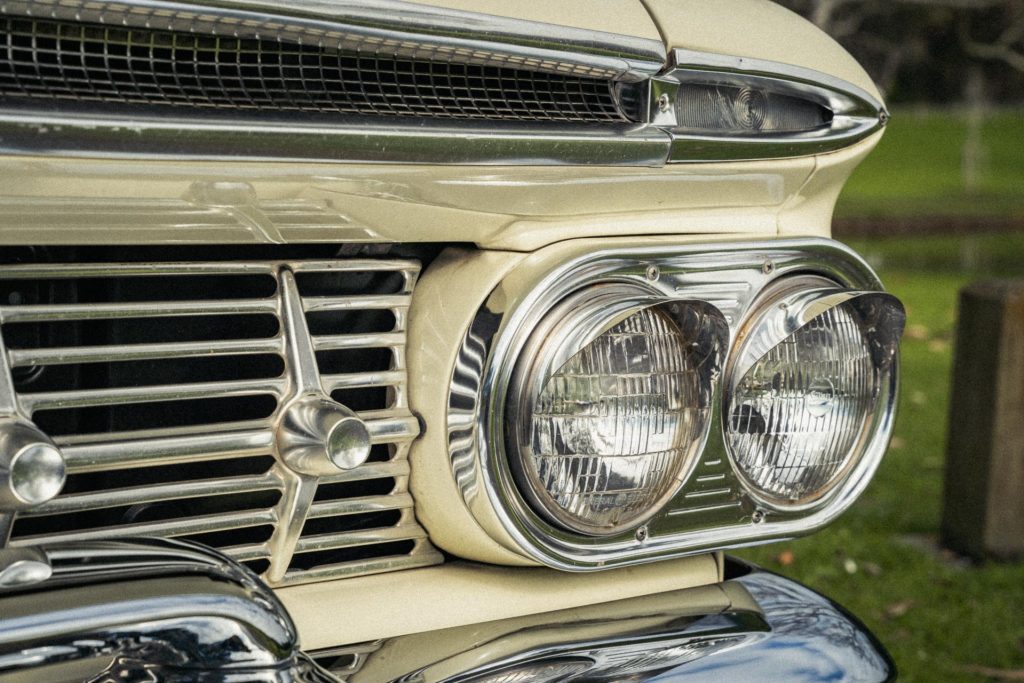
It needed some panel work, and a repaint, while the interior has been retrimmed too.
“It’s a bit messy under the bonnet, it’s not a show car.” While he is a regular at events like the Beach Hop, he’s not one for entering the pageantry. “I can’t be bothered hanging around.
We tend to go out early, watch them drive past, and then head to the pub.”
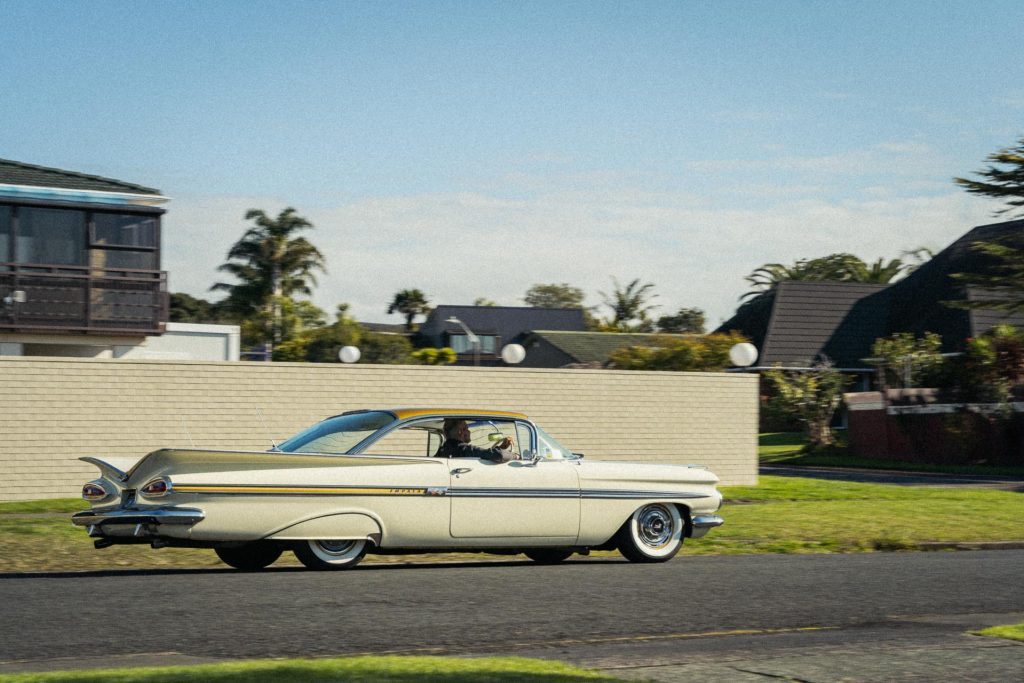
He’s not one for towing his car anywhere either.
“You see these cars getting trailered around, and I think why wouldn’t you want to drive them, really enjoy them? They seem to be more interested in winning trophies than driving their cars.”
Don has recently added a 1941 pick-up to his garage. “One of my mates said I could have bought a brand new Ford Ranger for the price I paid for it but I don’t want anything new.
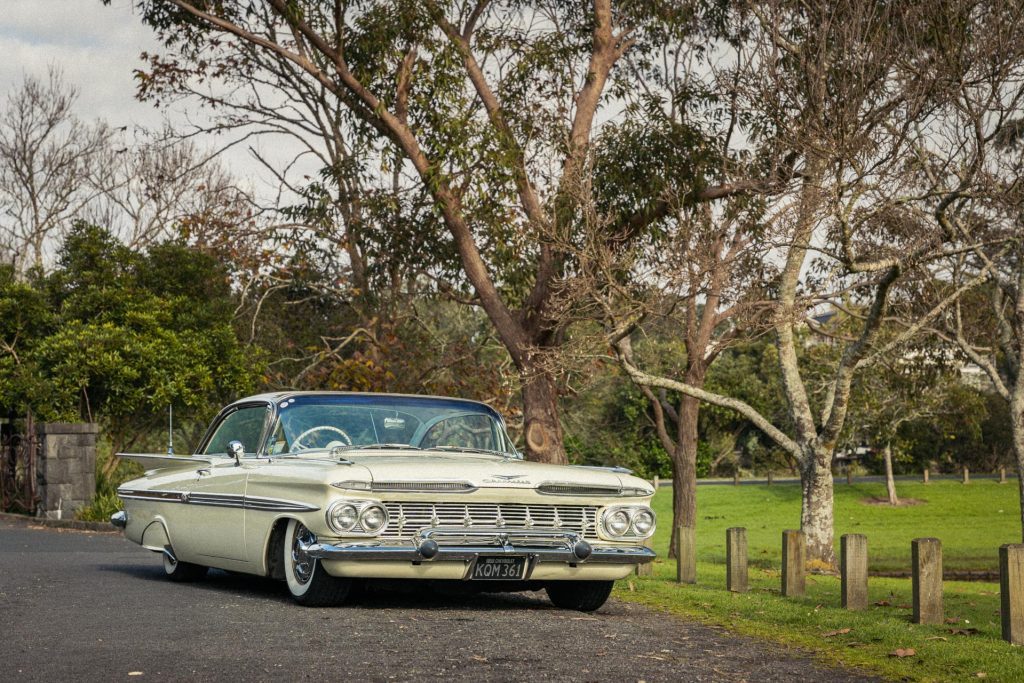
I love the old ones, they are fun to own and you actually have to drive the things.”
And when Don can no longer get behind the wheel of the Impala he’s told his son it’s his. “He’s rapt, and they’ll have something to remember me by, though it’s a wonder he hasn’t tried poisoning me off yet.”
This story first appeared in the August 2024 issue of NZ Autocar magazine.


